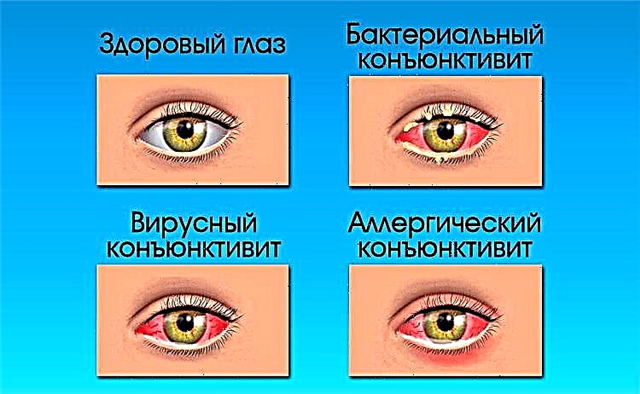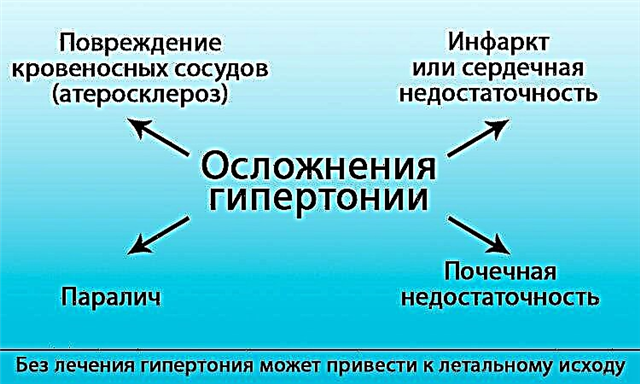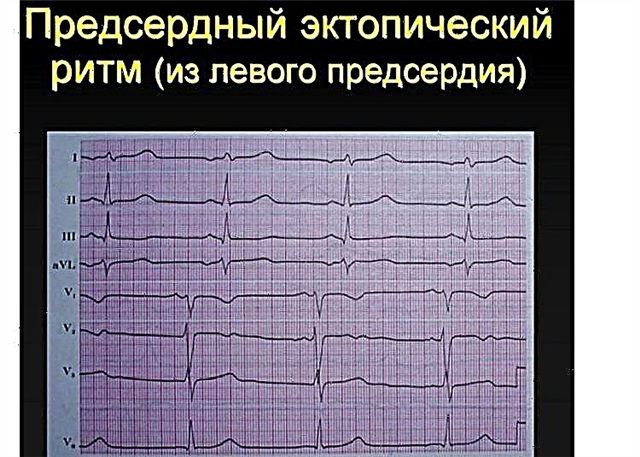 How is tracheitis treated in adults? You can treat the disease yourself at home, but carefully monitor the temperature and strength of the cough. Sometimes it is not possible to cope with the disease, so it is important to understand this in time and consult a doctor.
How is tracheitis treated in adults? You can treat the disease yourself at home, but carefully monitor the temperature and strength of the cough. Sometimes it is not possible to cope with the disease, so it is important to understand this in time and consult a doctor.
To know what medications to use, you need to find out the cause of the disease. Remember what you were sick the day before, whether there was hypothermia and with whom you communicated. In 80% of cases, tracheitis is the result of infection of the body with viruses or bacteria. It can appear on its own or develop as a result of the spread of inflammation from the oropharynx.
In addition, among the reasons can also be distinguished:
- severe hypothermia, when a reflex spasm of the vessels of the respiratory tract occurs and the strength of the local immune defense decreases. Conditionally pathogenic microbes begin to multiply, provoking inflammation.
Normally, they can be present, perfectly cohabitating with beneficial microorganisms. But as soon as the conditions for activation appear, they immediately seize the moment, predisposing to the onset of the disease;
- allergic reaction. Each person has their own specific allergens, to the action of which the body responds with a violent immune response. These can be food, wool, medicine, or perfume;
- immunodeficiency, which usually develops due to frequent exacerbations of chronic infectious and inflammatory diseases, for example, pyelonephritis, sinusitis or cholecystitis. As a result, all the forces of the body are directed to the lesion focus, while the infection does not waste time and enters the body;
- chronic pharyngitis, tonsillitis, or bronchitis. The presence of an infection in the respiratory tract significantly increases the risk of developing tracheitis;
- hypovitaminosis, when a sufficient amount of vitamins does not enter the body due to poor nutrition; postoperative period, if surgical intervention was performed on the respiratory organs;
- mechanical damage, for example, when small foreign objects get into the trachea, choking while eating. These can be food pieces or candy. In addition, damage to the trachea is possible during diagnostic procedures (bronchoscopy);
- smoking, alcoholism contribute to the chronicity of the inflammatory process;
- prolonged inhalation of cold, dusty or dry air.
Types and symptoms of the disease
If the pathology develops quickly, affecting the inflammatory process of the tracheal mucosa, it is customary to talk about acute tracheitis. It is often diagnosed against the background of already present inflammation in the nasopharynx or pharynx.
With improper treatment or its absence at all, the transition of the disease to a chronic form is possible, which is more difficult to treat. The people who are at risk for chronic tracheitis include hard-core smokers, lovers of strong drinks and workers with harmful working conditions (flour milling, chemical industry). And how many cases of tracheitis are recorded in chronic laryngitis in singers, teachers, as well as in angina.
In order to suspect tracheitis in an adult in time, you need to be attentive to your health. The disease begins with cough, soreness when swallowing, and subfebrile hyperthermia. Now, in order:
- the cough is usually dry, bothersome at night and in the morning. Often appears when laughing or breathing deeply. During an attack, a dull pain in the chest may be felt, making breathing difficult. A person cannot breathe deeply, so he breathes often and shallowly;
- the appearance of intoxication is accompanied by fever, body aches, malaise, drowsiness, fatigue and decreased appetite. All this makes it difficult for a person to fully engage in daily activities, work or study;
- an increase in closely located lymph nodes. They become sensitive when palpated and slightly increase in volume;
- sneezing, rhinorrhea, nasal congestion, and oropharyngeal pain may or may not be present. It all depends on the severity of the infection and the extent of the inflammation.
Sneezing can be the first sign of infection, so you need to drink plenty of warm fluids and take vitamins.
Diagnosis of tracheitis
 Only after a complete examination can the doctor accurately confirm the diagnosis. The diagnostic process begins with questioning complaints. The person needs to be told in detail what worries, when the symptoms appeared, and what treatment measures he took.
Only after a complete examination can the doctor accurately confirm the diagnosis. The diagnostic process begins with questioning complaints. The person needs to be told in detail what worries, when the symptoms appeared, and what treatment measures he took.
Next, an initial examination is carried out, during which the doctor palpates the lymph nodes, listens for breathing and performs laryngoscopy. He may notice redness and swelling of the mucous membrane of the oropharynx, larynx, hard breathing and dry wheezing. It can also be assigned:
- X-ray of the lungs to exclude pneumonia;
- a blood test to detect an inflammatory response in the body;
- bacterial culture of sputum or material taken in the form of a swab from the oropharynx.
Drug therapy
How to quickly cure tracheitis - this question worries everyone who is faced with the disease. To cure tracheitis, you must first recognize the pathogen on which the treatment tactics depend. First, we will analyze the types of medications that are used in treatment:
- antibacterial drugs are prescribed only after bacterial culture results are obtained, confirming the presence of bacteria. In most cases, penicillins with a wide spectrum of activity against bacterial microbes are used. Their action is aimed at inhibiting the reproduction process and the death of parasites. Among the drugs, it is worth highlighting Amoxiclav and Flemoxin, which are allowed even for children. Macrolides - Klacid, Sumamed, or cephalosporins - Cephalexin or Cefuroxime can also be used;
Clinically, bacterial inflammation can be suspected by high prolonged fever, severe cough for more than two weeks, and severe weakness.
- antihistamines (Loratadin, Tsetrilev, Zodak), the action of which is to reduce tissue swelling, sputum production and facilitate breathing;
- antipyretics such as Nimesil, Nimid will help fight high fever. Preparations of the group of non-steroidal anti-inflammatory drugs not only reduce hyperthermia, but also relieve headaches and fight inflammation; wet cough remedies are used to facilitate the discharge of phlegm by expanding the bronchi and reducing its viscosity. Among the effective drugs, Flavamed, Bromhexin, Lazolvan, Erespal and ACC should be distinguished. If obstructive bronchitis is suspected, Ascoril is recommended, which dilates the bronchi and removes phlegm;
- medicines for dry cough. The action of drugs in this group is based on inhibition of the cough reflex, therefore, they cannot be taken simultaneously with expectorant drugs. For a painful, unproductive cough, you can use Codelac or Sinekod.
Inhalation
With progression, tracheitis can be complicated by pneumonia, so the disease is treated in a comprehensive manner, preventing the spread of inflammation. Do not underestimate the effectiveness of inhalation, because it is this type of treatment that acts directly on the respiratory organs.
With the advent of the nebulizer, the procedure has become much easier and does not require large preparations. The difference and advantage of the device is the ability to regulate the diameter of the particles into which the medicinal solution is ground. Thus, we can independently control the depth of their penetration.
In addition, the device does not allow mucosal burns due to temperature control, and also makes it possible to accurately dose the medicine. Note that all drugs for inhalation through a nebulizer are diluted exclusively with saline.
| Inhalation drug | Action | Dosage |
|---|---|---|
| Saline solution without additives, alkaline still water (Essentuki, Borjomi) | Moisturizing the mucous membrane, reducing its irritation and preventing injury | 4 ml is enough for one session. Does not require dilution. |
| Fluimucil, ACC | Thinning phlegm, making it thinner, thereby making it easier for it to pass through the respiratory tract to the outside | A 3 ml ampoule of medication must be diluted with the same amount of saline. For inhalation, 4 ml of the prepared medicine is enough. |
| Lazolvan, Ambroxol | Reduces the viscosity of bronchial secretions and accelerates its excretion | It is necessary to buy a solution for inhalation, mix 2 ml of the medicine with two milliliters of saline. Ambroxol is several times cheaper than Ambrobene and Lazolvan |
| Berodual | Expands the bronchi, improves the expectoration of sputum | It is sold in the form of a solution; it is enough to dissolve 20-40 drops (depending on the severity of the condition) in 4 ml of saline. |
| Dioxidine | Powerful antibacterial agent | Before using, you need to pay attention to its concentration. If 0.5% - dilution with saline 1: 1, if 1% - 1: 4. |
| Interferon | Boosts immune defenses and fights viruses | The ampoule is diluted with three milliliters of saline |
| Tussamag | Reduces dry cough | Diluted 1: 1 with saline |
 In order for inhalations to be beneficial, you need to know exactly the dosages and how many times the procedure can be performed. In addition, you must follow these recommendations:
In order for inhalations to be beneficial, you need to know exactly the dosages and how many times the procedure can be performed. In addition, you must follow these recommendations:
- it is forbidden to carry out the procedure with a fever above 38 degrees;
- after inhalation, you should not smoke, go out into the cold, drink liquid and eat for half an hour;
- when treating tracheitis, it is required to inhale steam through the mouth;
- after the procedure, you need to clean the device to avoid contamination.
Physiotherapy procedures
Treatment of tracheitis in adults will be much more effective if drug therapy is supplemented with physical therapy. They not only enhance the effect of medications, but also have their healing effect:
- UHF therapy makes it possible to accelerate recovery by exposing the body to an electromagnetic field. The procedure begins after fixing the electrodes on the surface of the skin so that an air gap remains between them and the skin. The action of UHF currents is aimed at heating tissues, reducing bronchospasm and the severity of inflammation. The duration of the session and their number is set by the doctor. The procedure can be repeated 4-12 times;
- Inductothermy involves using a magnetic field to warm tissues and reduce phlegm production. The duration of the session is 10-20 minutes, and the course may require 15 repetitions;
- electrophoresis is used almost everywhere due to its high efficiency. The technique allows drugs to be passed through the skin directly to the inflammation focus. This is done using electrodes and current. In the treatment of tracheitis, calcium chloride or potassium iodide is used. The duration of the session reaches 15 minutes, and their number - up to 10 times.
Home treatment
 Not everyone can find a nebulizer in the house, so there is a different way to carry out inhalations. To do this, just take a container (saucepan, bowl), hot solution and a towel. For the procedure, you can use:
Not everyone can find a nebulizer in the house, so there is a different way to carry out inhalations. To do this, just take a container (saucepan, bowl), hot solution and a towel. For the procedure, you can use:
- oil solutions. For cooking, you need to add 5 drops of eucalyptus, menthol or fir oil to 450 ml of boiling water. After slightly cooling the medicine (up to 55 degrees), you should bend over the container with the solution, cover your head with a towel and inhale the steam. The steam temperature should be monitored to avoid scalding. The duration of the session is 7-10 minutes;
- decoction of potatoes. For cooking, it is enough to boil a few potatoes (5-7 pieces), drain the water and inhale the vapors, covering your head with a towel;
- herbs such as thyme, chamomile, mint, and pine buds are good for treating coughs. To prepare the broth, you need to grind 15-20 g of grass, pour 460 ml of boiling water and leave to infuse for 5 minutes. Then you can start inhalation.
When tracheitis occurs, treatment can be supplemented with warming up procedures. To do this, you can use compresses:
- goose fat. It must be melted over low heat until a liquid consistency is obtained. Then, you need to grease the upper part of the chest with melted fat, cover with a plastic bag and on top with a warm handkerchief. This will ensure deep heating;
- alcohol compress. For the procedure, you can use vodka or alcohol diluted with water (1: 1). Warm up a little vodka, you can grease it on the back (to the lower border of the shoulder blades) and the front chest, and then put on a T-shirt and a warm sweater. You can supplement this rewarming by wrapping yourself in a blanket;
- vinegar compress is done for fever. It is enough to dilute vinegar twice with water, moisten a gauze napkin and apply to the calves, wrists and frontal area. As the gauze dries, it is moistened again. Rubbing the feet and hands with vinegar is also recommended, which allows the body to give off heat as the vinegar evaporates. Such procedures are carried out with a fever above 39 degrees.
Effective treatment of tracheitis involves adherence to a certain regimen:
- bed rest in the first days of illness;
- drinking plenty of fluids. It can be compote, tea, alkaline mineral water without gas, herbal teas and warm milk. Separately, it must be said about the effectiveness of rose hips, a decoction of which provides a diuretic effect and fills the body with vitamins. Thus, the circulatory system is cleansed of toxins, fever and inflammation are reduced;
- vitamin food (fruits, fresh vegetables, chicken soup);
- wet cleaning in the room;
- regular ventilation and humidification of the air;
- reducing stress and visiting crowded places during an epidemic.
Thanks to complex treatment, tracheitis can be cured within 10-12 days.
If the cough persists longer, it is worth suspecting the progression of the disease and the development of bronchitis. If untreated, tracheitis can lead to pneumonia, when cough syrup and inhalation cannot be dispensed with.



